[ad_1]
This post may contain affiliate links. We may receive a small commission, at no cost to you, if you make a purchase. Read Disclosure.
Cuba is like a moment paused in time. It’s where classic American cars line the streets, where flavors of mojito slings and smokey cigars fill the bars, and where salsa music can be heard from taverns throughout the night.
While four days might not seem like a long time, this is a good amount of time to uncover the highlights of Cuba.
To help you make the most of your time in Cuba, we’ve prepared this 4 day Cuba itinerary, so you can experience the heart of the country in a short amount of time…
At A Glance: 4 Day Cuba Itinerary
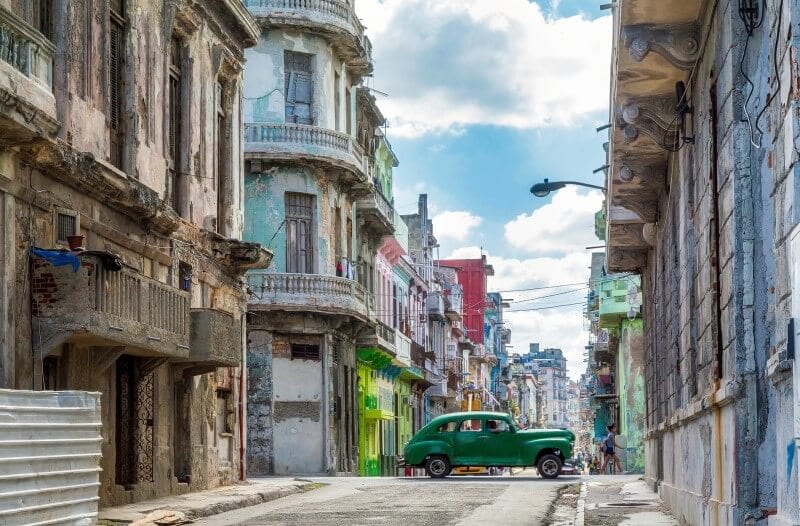
If you’re short on time and not sure how to spend 4 days in Cuba, here is a quick overview of our suggested 4 day itinerary:
The best way to get around is to hire a car and drive, or by taking buses known as Collectivos.
You can also get night buses, which will save you on accommodation. For night buses, look for Viazul buses.
Day One: Havana, Cuba
Below is how we would spend the day in Havana, Cuba. This is the first day of your Cuba itinerary, but don’t worry, there will be plenty of time to explore Havana over the course of these four days.
Stop 1: Revolution Square
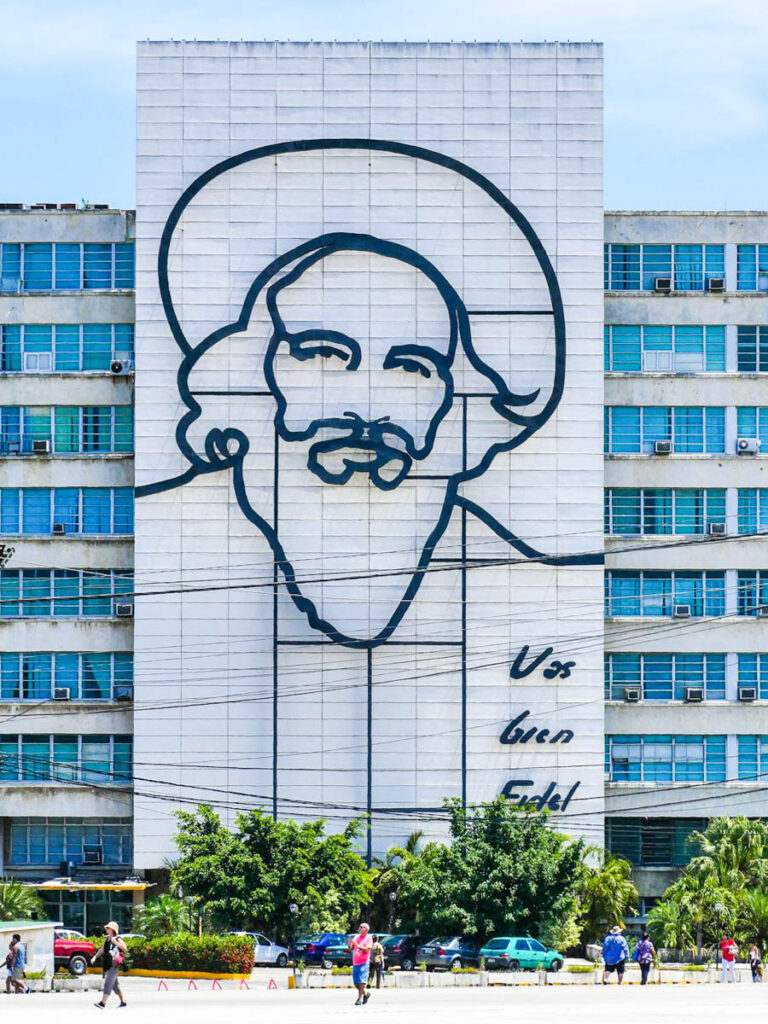
The square is notable as being where many political rallies take place in Cuba.
You’ll see the famous faces of Che Guevara and Camilo Cienfuegos – important figures during the Revolution.
We enjoyed the view from a huge obelisk with Jose Marti overlooking the square. I didn’t know a thing about Jose Marti, but the Cubans adore him.
He’s a writer, poet, journalist and essayist but he also lead the first Cuban Revolution and it’s said that Castro got his inspiration for his Revolution from Jose Marti.
Stop 2: Old Havana Walking Tour
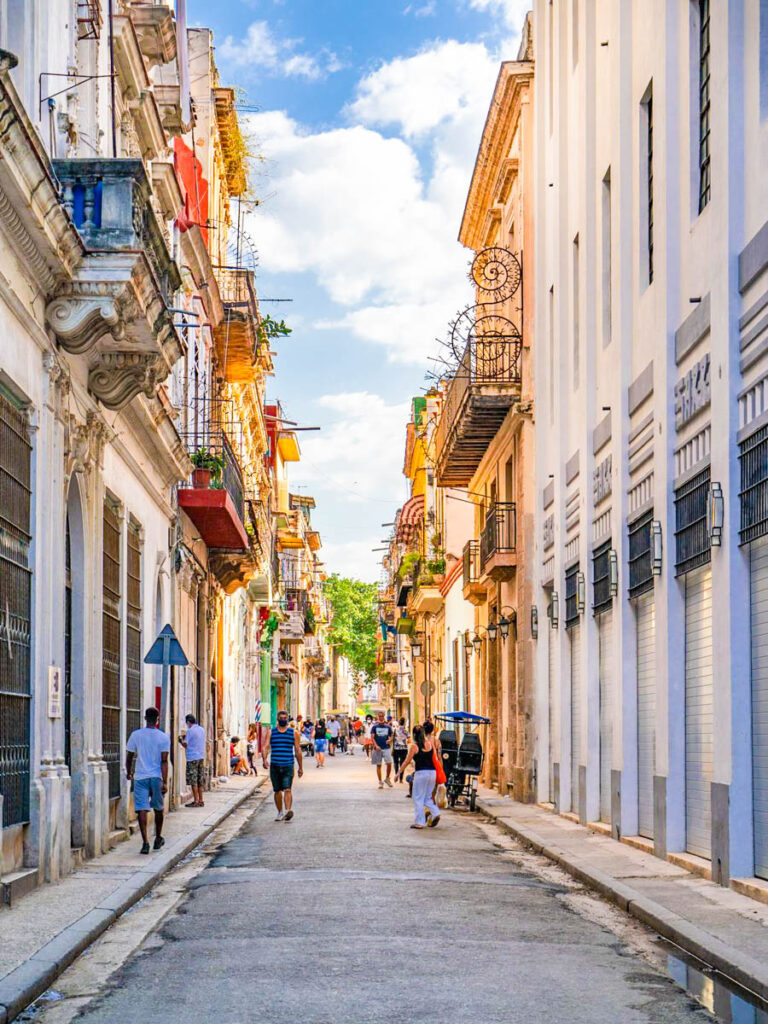
This is a FREE walking tour put on by university students and is a great way to get to know the city.
Havana is laid out by 5 main squares and they walk you around to each of them and give you a VERY in depth history (from their perspective) about Cuba and the Cuban People.
The squares; Plaza de Armas, Plaza del Cristo, and Plaza de la Catedral, Plaza de San Francisco, and Plaza Vieja, house more than 900 historical buildings with many different styles.
Not only do you get to learn about the history, but you can see what makes Havana unique. See the vintage cars lining the streets and admire the colonial architecture from the squares.
Bring cash to tip your guide for all of their hard work!
Stop 3: Revolution Museum
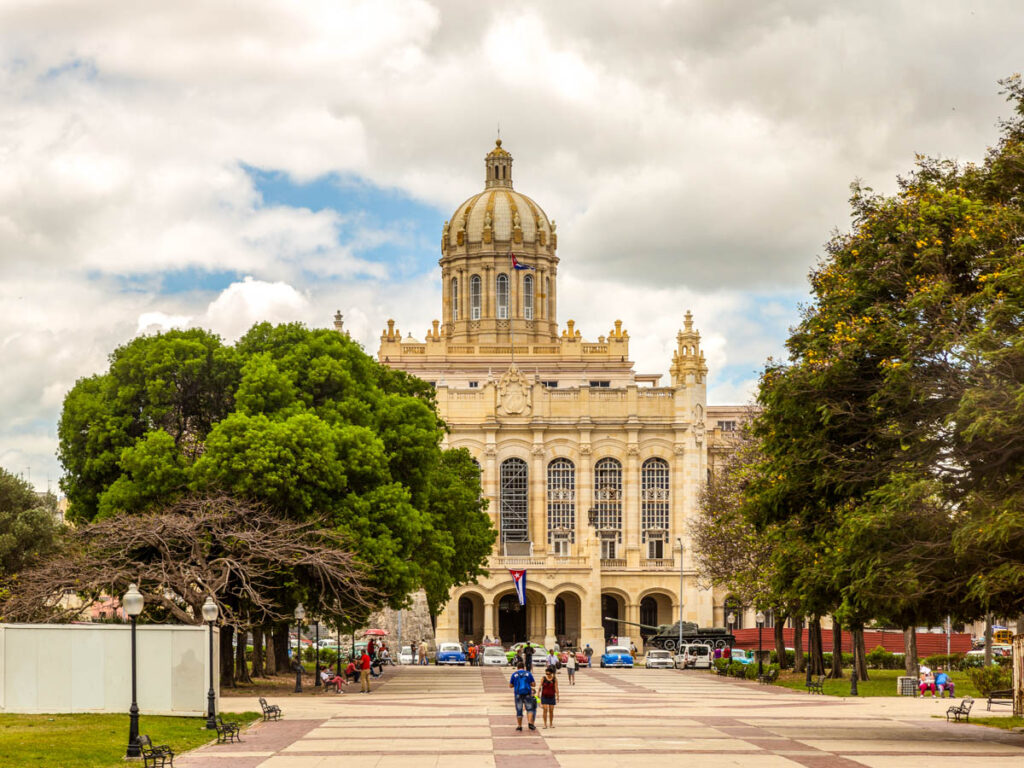
I highly recommend you check out the Revolution Museum. It’s about $8 CUC for the entry fee. You’ll learn about the Revolution from the Cuban perspective.
Stop 4: National Museum of Fine Arts
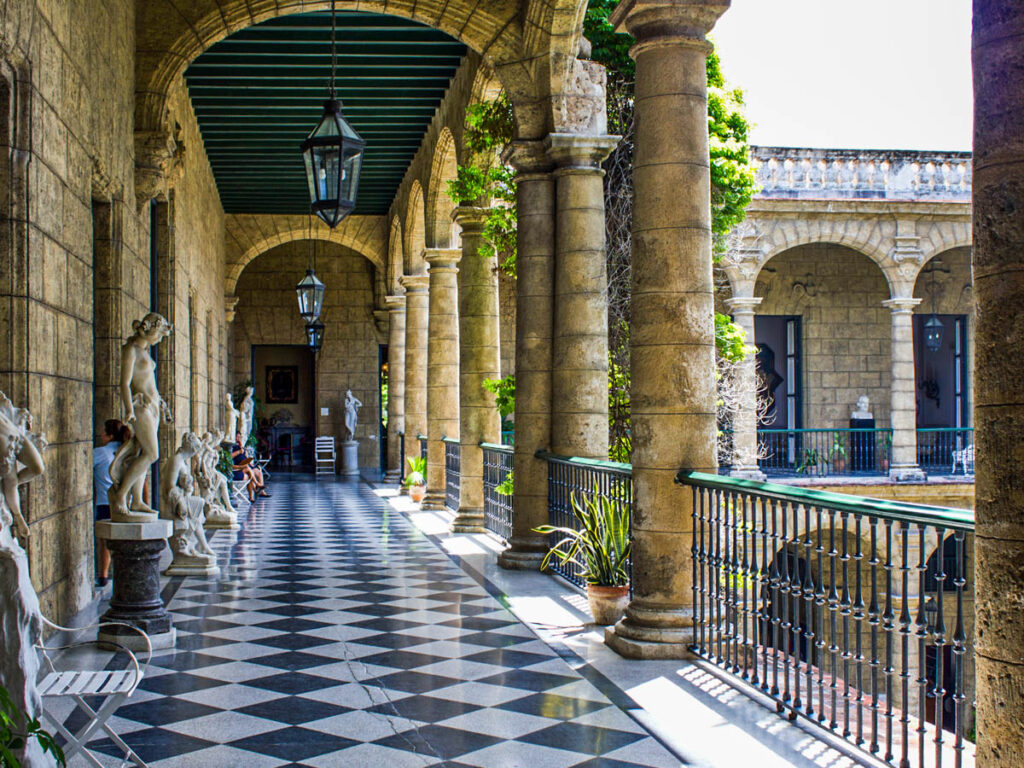
It’s quite a large museum with lots of beautiful artwork so I think you need about 3 hours to explore every floor. We only had one hour and it wasn’t enough. The Museum of Fine Arts exhibits Cuban art collections from the colonial times up to contemporary generations.
Stop 5: Playas des Este
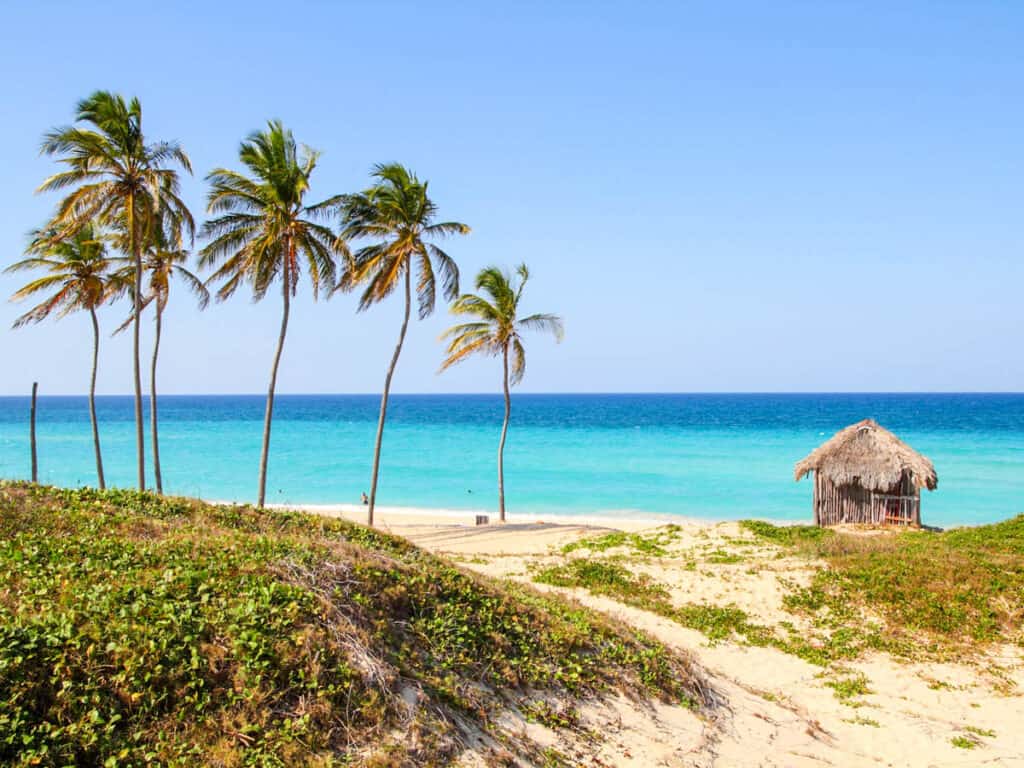
Playas des Este is the closest beach to Havana and its simply stunning. This white sand beach is just a stone’s throw from Havana, and boasts pristine shores and azure waters.
This coastal paradise offers a refreshing escape from the city’s hustle and bustle, where you can either relax and sunbathe or partake in water sports.
The laid-back atmosphere and swaying palm trees just ooze relaxation.
If you want to go a bit further, the beach at Varadero is also stunning, but a lot further away.
You can catch a bus near Central Park, or get a taxi to take you.
Day 2: Day Trip to Viñales on a Cuban Classic Car Tour
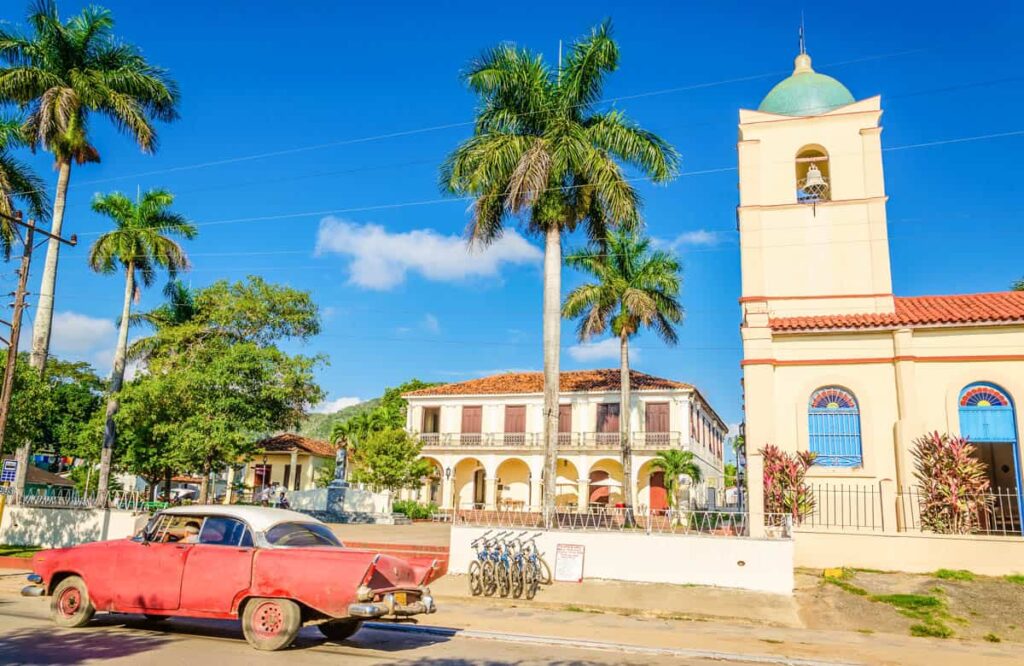
We took a classic car tour to Vinales, a town on the western side of Cuba which has these beautiful steep-sided limestone hills, known as mogotes.
This tour will pick you up in an old classic car of your choice (we chose a convertible Bonneville) and will drive you about 2.5 hours to Vinales.
On the way we stopped at a traditional Cuban Coffee Stand and then went to a farm where they showed us how they made Cohiba Cigars.
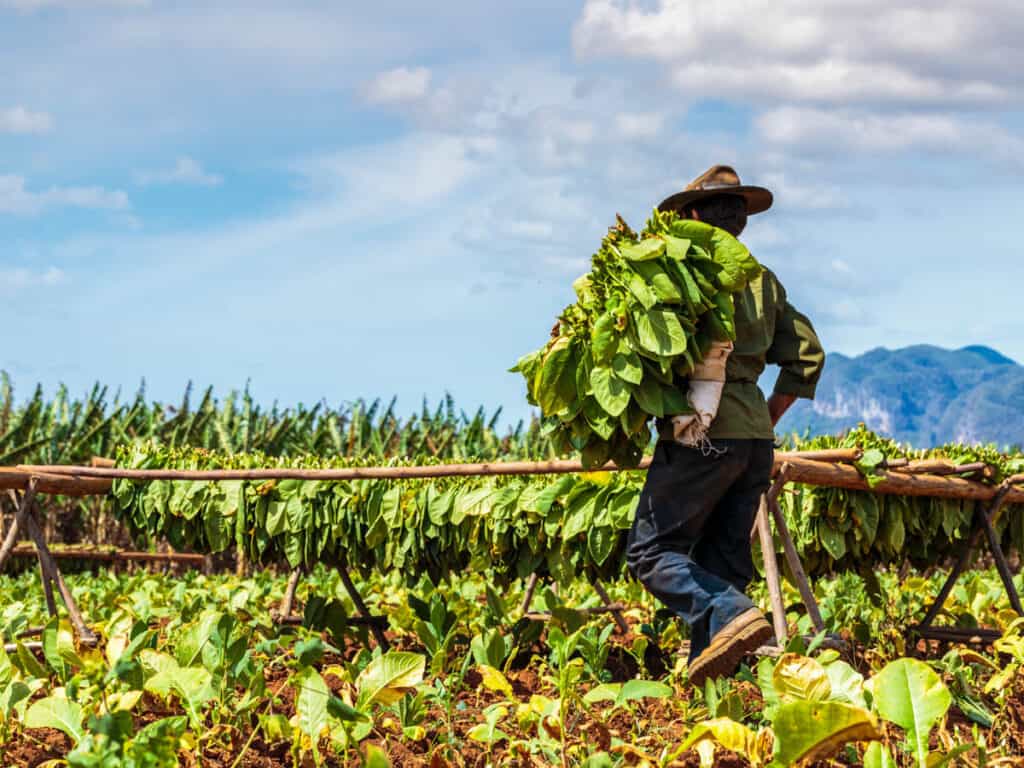
To put it into perspective, Cigars there were about $10 USD for one. If you were to buy that same cigar here would be $20 USD. So you save about 50%.
HOT TIP! The best way to tell if your cigar is authentic and really made of pure tobacco leaves the ash will be white when it burns.
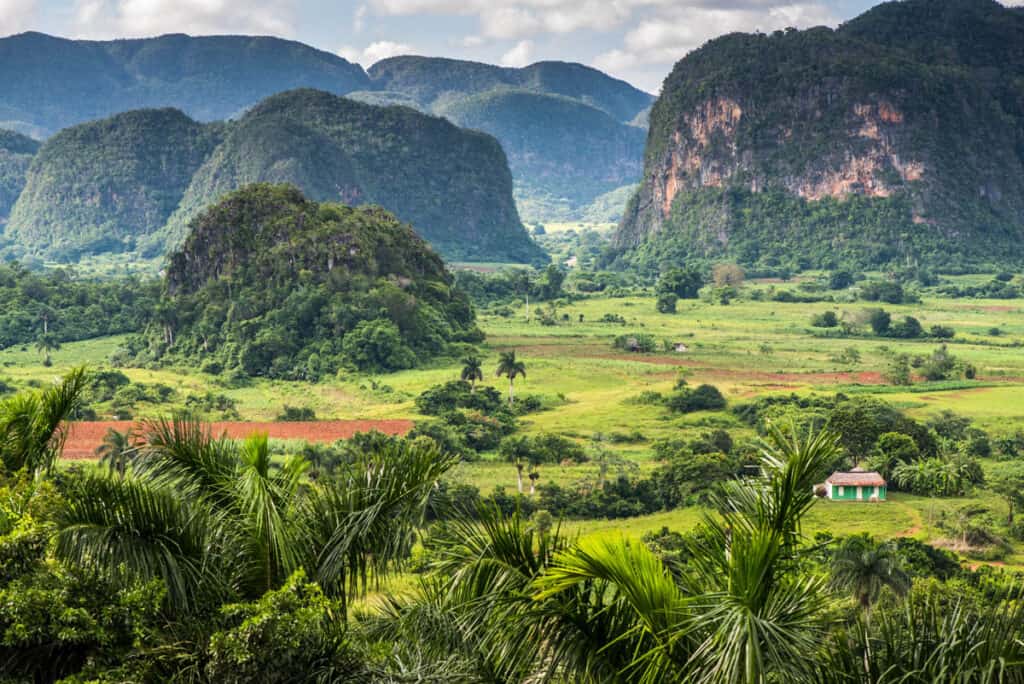
Then we went up to the beautiful hotel to snap a photo of Vinales itself. You can also go horseback riding through the tobacco plantation, which is a great way to experience this stunning landscape.
Since it was quite busy, rather than going on a Cave tour (which is typical with these tours), they took us to this amazing lake nearby (a place that reminded me of a summer camp).
We rented canoes and paddled around and went swimming in the freshwater lake – a big relief from the heat!
Day 3-4: Visit Trinidad
Located south of Havana is the charming town of Trinidad, known as the gateway to Gran Parque Natural Topes de Collantes, a nature reserve in cuba known for its waterfalls and hiking trails.
Stop 1: Climb the Bell Tower
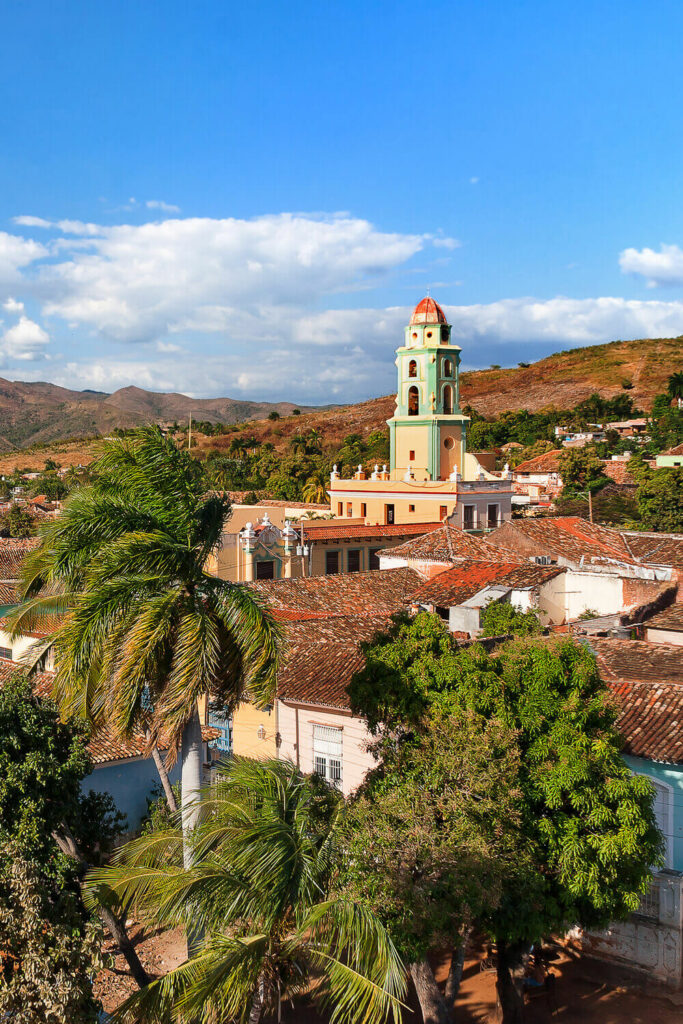
The Bell Tower is the perfect first stop in Trinidad since it offers a breathtaking vantage point to see the city from.
As you ascending the narrow staircase of this historic structure, you’ll soon be met by the panoramic spectacle of terracotta rooftops, verdant landscapes, and the azure Caribbean Sea beyond.
The bell tower was once the former convent of San Francisco de Asís, but has been a museum since 1986 and is known for its beautiful pastel yellow design.
Stop 2: Playa Ancon
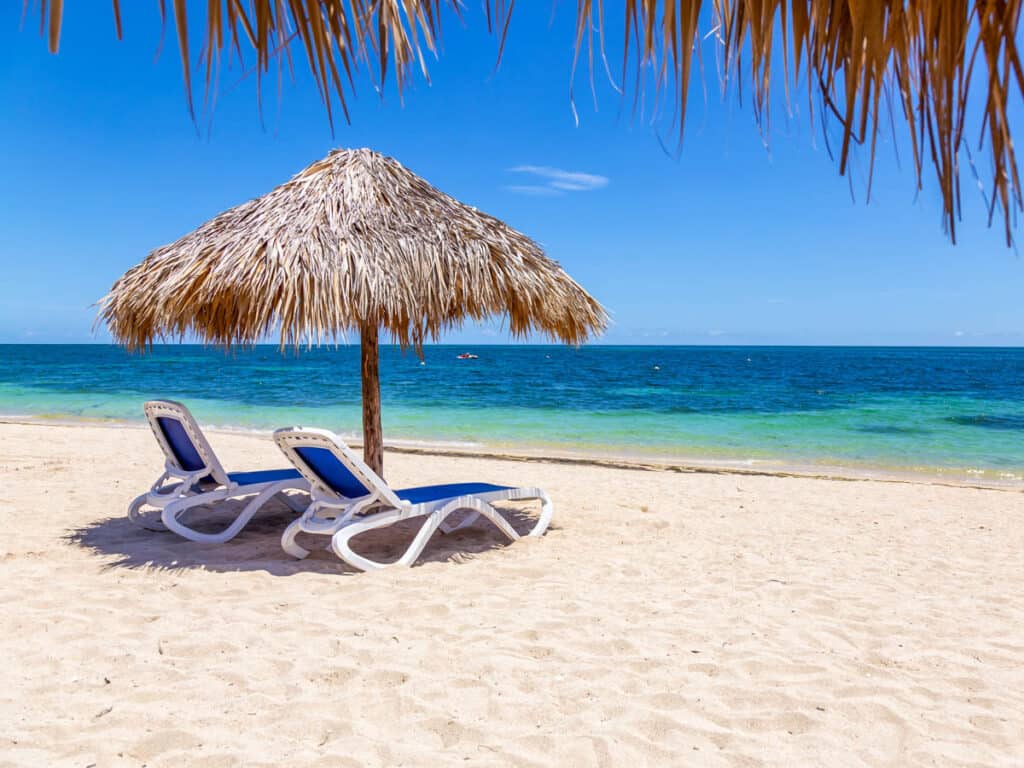
Since it’s a four hour drive from Havana to Trinidad, you’re going to arrive in the afternoon and probably just want to relax.
I recommend you visit the beach, Playa Ancon, and enjoy the crystal clear Caribbean waters.
Playa Ancon is a pristine jewel along Cuba’s southern coast and boasts powdery white sand and thriving coral reefs that are ideal for snorkeling and scuba diving enthusiasts to explore.
Be sure to catch the sun set here, as the sun dips below the horizon, the beach comes alive with a magical display of reds, oranges and yellows.
Stop 3: Plaza Mayor
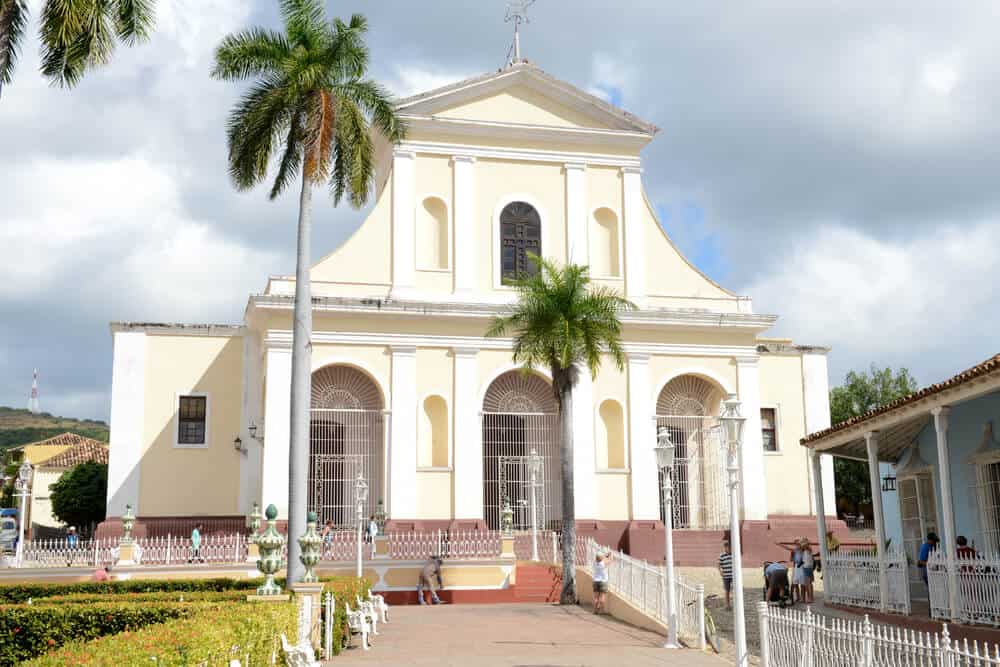
In the evening, walk over to Plaza Mayor. This UNESCO World Heritage Site is a captivating mosaic of Spanish colonial architecture, adorning the heart of Trinidad with its ornate buildings and timeless charm.
In the day time, the plaza’s vibrant ambiance is created by a mix of locals and tourists who converge amidst the town’s iconic landmarks, and at night, the square comes alive with the sounds of music from the surrounding bars.
If you want to experience a bustling nightlife in Trinidad, this is the place to go.
Day 4: Hike to Vegas Grande Waterfall
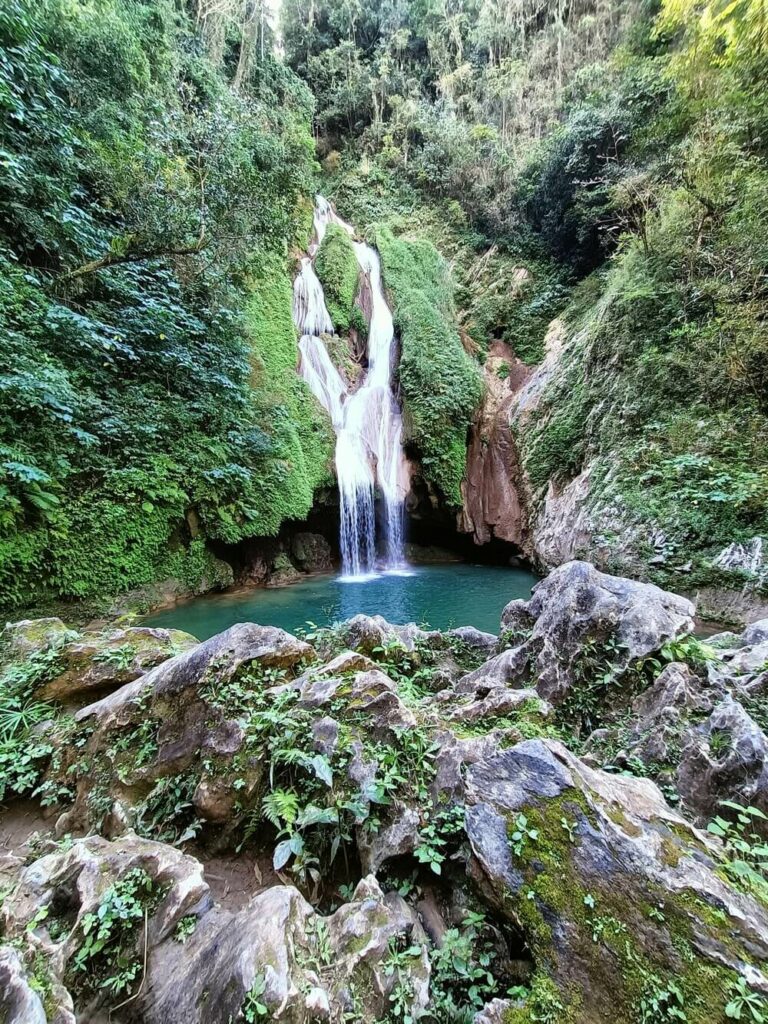
Spend the fourth day exploring El Cubano Natural Park, located on the border of Gran Parque Natural Topes de Collantes.
This beautiful rainforest is where you will find the Vegas Grande Waterfall, a beautiful nature spot for swimming in.
The approximately 1-mile hike through lush jungle terrain leads to the awe-inspiring sight of the second-highest waterfall in Cuba, standing at a majestic 800 meters above sea level.
While the trek presents some demanding segments, the captivating serenade of the falls and the refreshing plunge into the pristine pool make every step worthwhile.
Be sure to take your time and enjoy a swim in the refreshing pools. There are many trails in the park, so we recommend spending a day here to really soak in the nature.
If You Have More Time
If you can extend your trip, it’s worth considering spending time in Santa Clara.
Because you only have four days, it won’t be possible to go within this four day itinerary of Cuba, but may be something you want to add to your bucket list for a later date.
Santa Clara
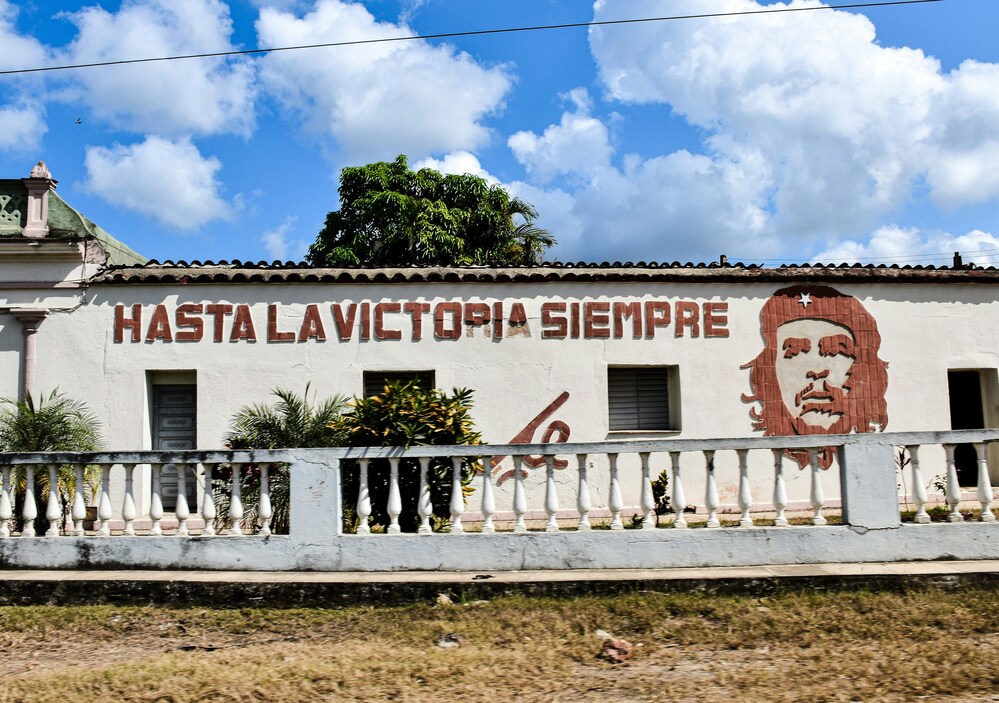
Santa Clara offers a unique blend of historical significance and contemporary vibrancy beyond its association with Che Guevara.
It’s where you’ll find the iconic Che Guevara Mausoleum and Monument as well as picturesque colonial buildings and peaceful outdoor parks.
The city’s vibrant central square, Parque Vidal, serves as a hub for social life, while its young and cutting-edge community bring the city to life.
Sit back and relax in the charming cafes or exploring historic landmarks, whilst soaking up the small-town charm. If I had an extra day in Cuba, I would undeniable spend it here.
Food and Nightlife in Havana
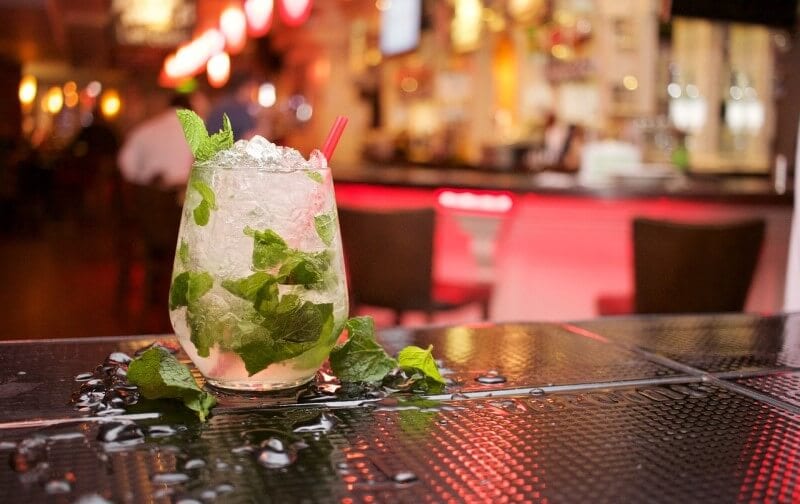
You should only pay about $3-$5 for a mojito. Anything more and you are in a very expensive place that is catering for you, the tourist.
Main courses for food was about $7 for a main meal, but you could pay up to $22 if you were getting Lobster (and that is expensive there).
Here are a few of my favorite places that we visited.
Hotel Ambos Mundos
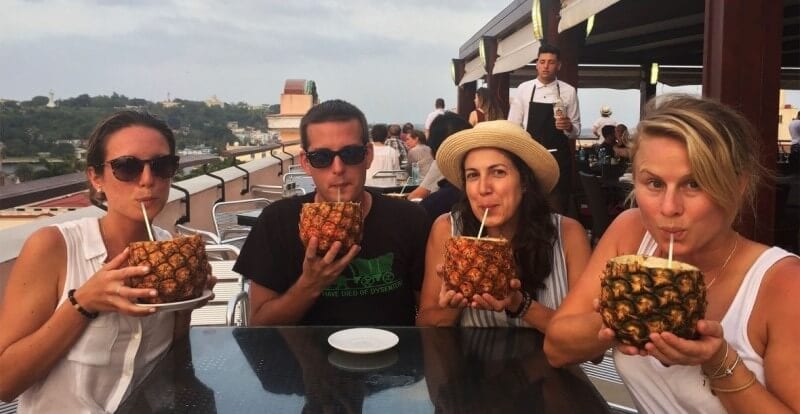
Come up to Hotel Ambos Mundos for sunset and enjoy a Pina Colada while overlooking all of old Havana. They will bring it to you in a fresh pineapple and will pour the famous Havana Club Rum in there!
This hotel was a favorite of Ernest Hemingway (he spent a lot of time in Cuba and Key West) and there is actually a small museum dedicated to him in the hotel.
Apparently the lobster is actually quite good in Cuba and it is also no where near the price of lobster in Maine.
ChaChaCha Restaurant
If you are looking for a nice place to eat after you tour the Revolution Museum, ChaChaCha is a good option. The food and atmosphere were great (try the pasta!).
Lamparilla 361
This is a fun cantina off the beaten track, recommended to us by our local Cuban tour guide.
Paladars
A paladar is a small family-run restaurant in a Cuban home so it’s the best way to taste traditional Cuban food. You’ll see Paladars everywhere.
They always have a good price and you get four courses and a drink.
Salsa Club 1830
Come out to the best salsa club in Havana. Get those hips moving and try salsa dancing, or enjoy a Havana Club and chill out on the patio under the stars.
There was a $5 CUC cover fee when we went.
Getting to Cuba
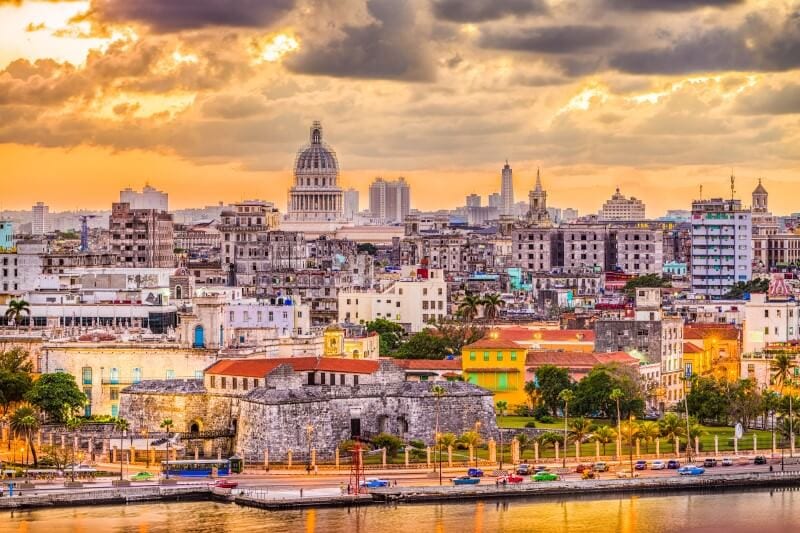
We traveled on Frontier Airlines leaving from Miami, Florida. Most nationalities need a visa to enter Cuba.
For Americans, you need to obtain a Pink Visa. Rest of the World may need a Green Visa. Check which visa applies to you before you travel.
We got our Cuban visa one month before traveling for $109 for 2 business day approval. Every website I read made it sound like YOU MUST get the visa before you travel, but in reality, when we got to the check-in counter, the airlines were selling them for $100.
If you plan in advance, you can get one for $89 but it takes 7 business days.
On the plane, they give you a tourist card to fill out which explains your reason for traveling.
We arrived at José Martí international Airport (HAV), got off the plane and entered Cuba without a hitch. I don’t know if immigration even looked at our tourist cards.
What To Pack For Traveling to Cuba
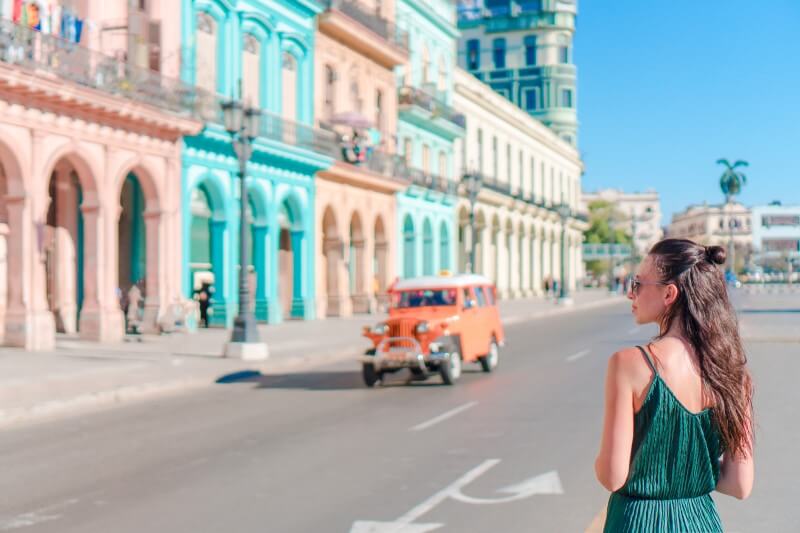
Pack light when visiting Cuba. There is no reason to pack your high heels or favorite silk top. Seriously you would just be flaunting it around.
I find it’s best to blend in and become a part of the culture.
I recommend light and comfortable clothing, walking shoes and a hat. (A hat is a must have if traveling in summer!)
Make sure to bring the essentials – toothpaste, deodorant, toothbrush, sunscreen, etc. You won’t be able to buy them there as they don’t have convenience stores.
Check out these posts to help you find the best luggage or suitcase for you:
Cuban Currency
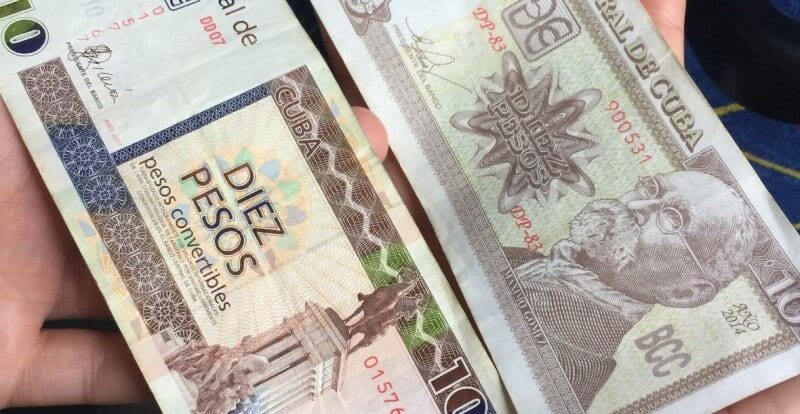
U.S. credit and debit cards DON’T work in Cuba, so if you’re American, you will need to bring enough cash for your trip.
We took about $800 USD cash for 2 people for 4 days. We didn’t exchange it all though – I just wanted to make sure I had enough cash, just in case.
In Cuba they used to have 2 currencies; The CUC (Cuban Convertible) and the CUP (Cuban Peso). Now they only use Cuban Peso (CUP) so make sure that you are not given CUC as change as this is now worthless.
Above is a picture of the two currencies.
You will need to exchange your cash, and there is a 10% tax to exchange USD + a 3% exchange fee. So for $100 USD you’ll get about $87 worth of CUP.
You can exchange it at a bank with your passport, but you can also exchange American dollars with some hotels.
$90 worth of CUP is a lot of money there, but as with any place you travel, there are tourist traps and people will try to rip you off, so do make sure you check the reviews of the exchange places you go to.
Non-Americans can use credit and debit cards, no problem.
Best Time To Visit Cuba
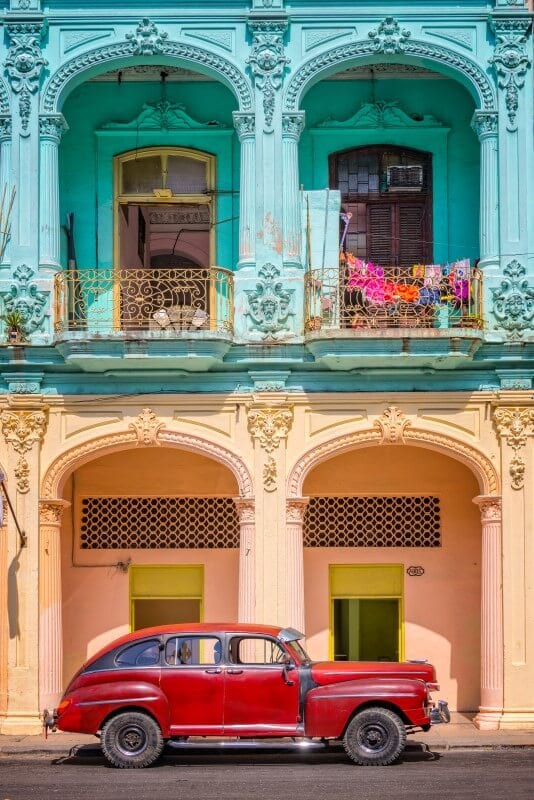
The best time to visit Cuba is from December to April, particularly in March and April when the weather is warm and sunny without the humidity or storms of summer. These months also have the least chance of rain.
These months have average sunshine and fewer crowds compared to the upcoming months of early summer.
Final Thoughts
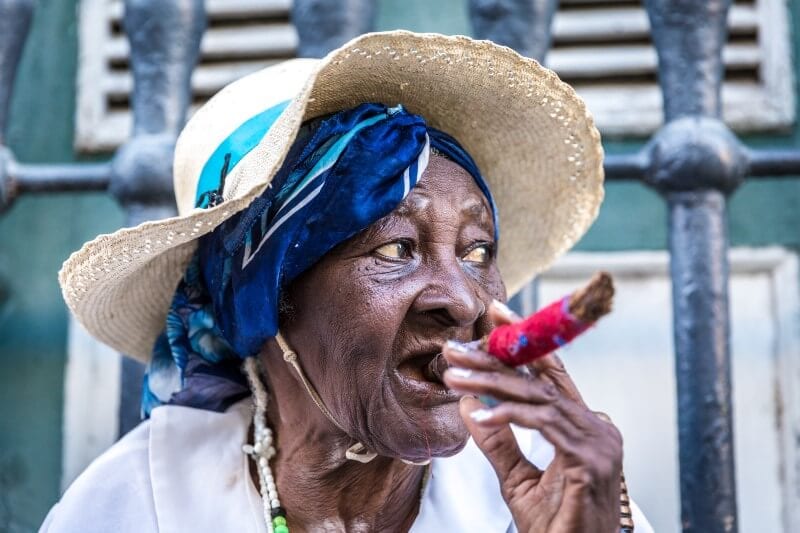
Cuba has not been an easy country to visit for many years. It went from being one of the most vibrant party places for wealthy Americans in the 1920’s to a place where Communist rule has led to decades of disagreements between America and Cuba.
This disagreement made it hard for Americans to travel to Cuba because of a commercial, economic and financial embargo that was placed in the 1950’s.
In 2016, President Obama started what appeared to be a slow unwinding of the embargo, but this seems to be changing under the new American Presidency.
Now it’s much easier for Americans and other nationalities to visit Cuba and I highly recommend you jump on a chance to see this amazing country while you can.
More Cuba Travel Tips
Need more inspiration for your trip to Cuba? Here are some other helpful guides…
Popular Havana Tours
Want to travel to Cuba but don’t want to go alone?
GLOBUS DISCOUNT JUST FOR YOU!
We’ve secured an exclusive yTravel discount: Save $100 per person on select 2024 Globus and Avalon Waterway Vacations. Use the code: YTRAVEL when booking online at the Globus, Cosmos, and Avalon Waterways websites, by calling Globus and Avalon Waterways directly, or booking with a preferred Travel Advisor. Terms & Conditions.
You can also find more tours of Cuba via Get Your Guide:
Pin To Save On Pinterest
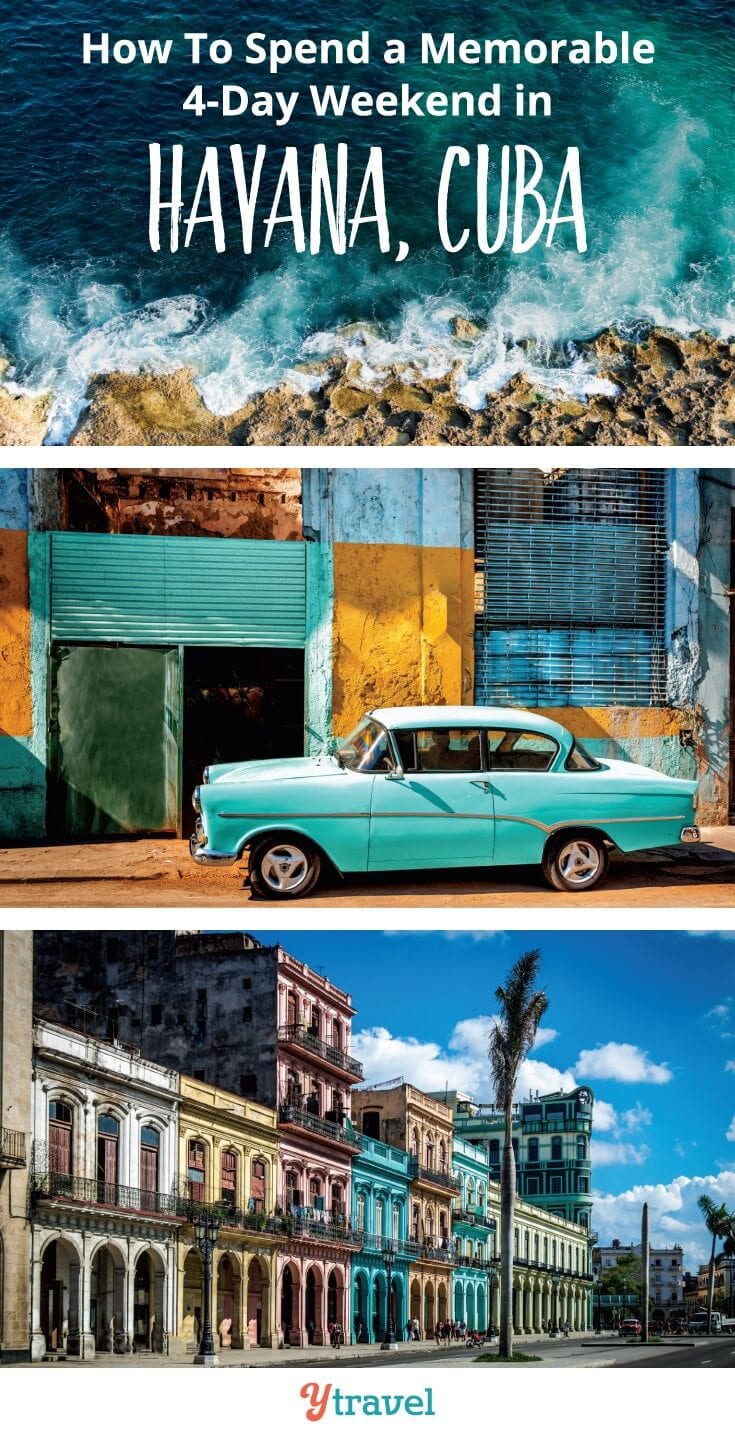
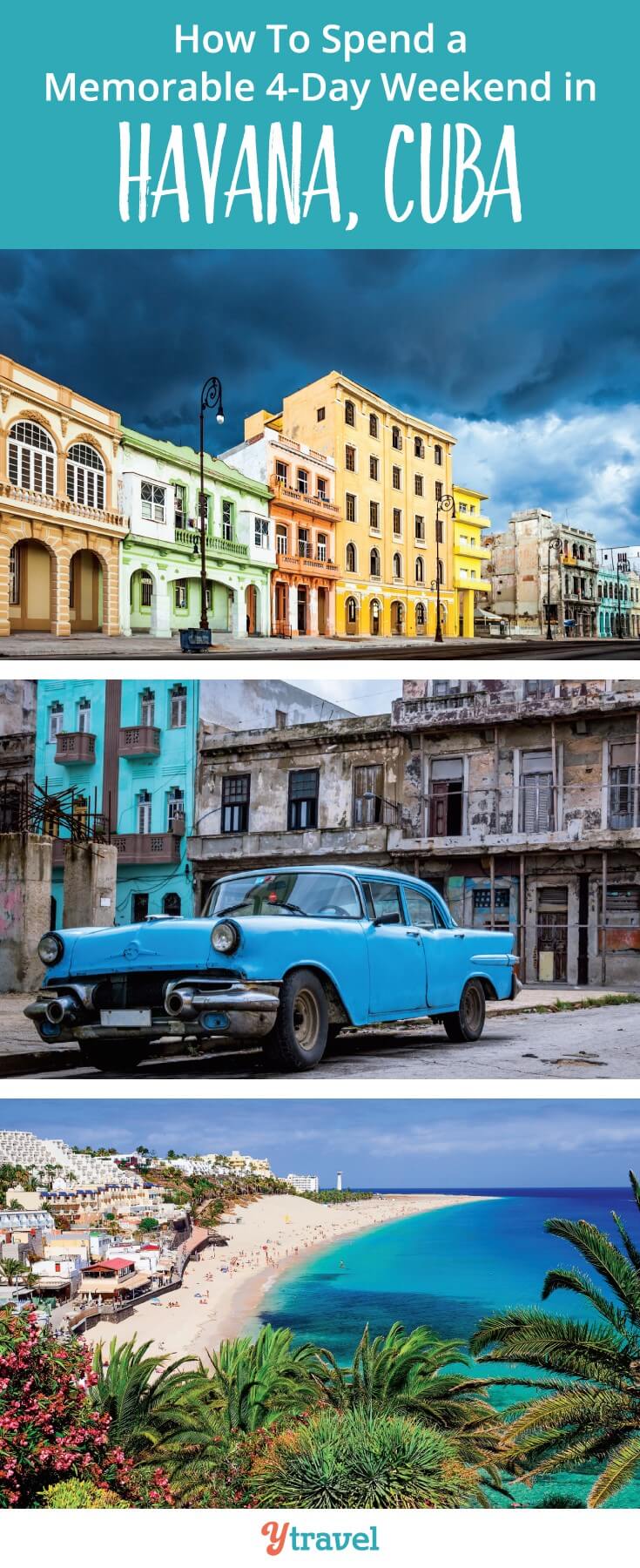
Have you been to Cuba? What are some of your favourite things to do and places to visit? Let us know in the comments.
[ad_2]
Source link
